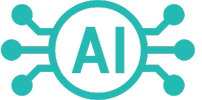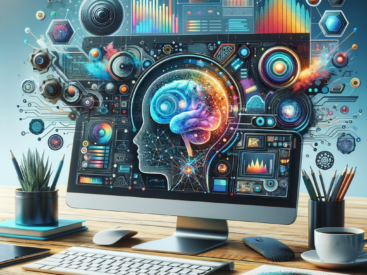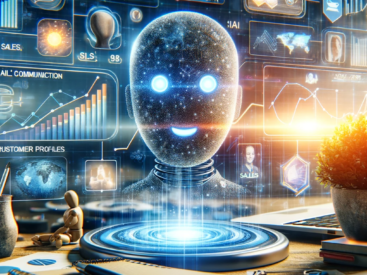The current situation and projected implications of Generative AI (GAI) in the workplace are multifaceted, with several key trends and challenges.
As of 2024, businesses of varying sizes are utilizing GAI, predominantly for content creation rather than for complex operations like manufacturing or supply chain management. The integration of GAI in the enterprise sphere is still in its early stages, with a relatively low adoption rate, especially among larger companies. Only about 13% of AI chatbots are from companies with more than 1,000 employees. The primary uses of GAI in enterprise settings have been identified as content and writing, coding and programming, business communication, and reporting.
One of the significant trends in GAI’s adoption is its potential for reshaping organizational and market structures. For instance, the use of advanced chatbots and Large Language Models (LLMs) can significantly enhance data accessibility and utilization within companies, offering a more interactive and efficient way to handle vast data. This capability is seen as a key driver for businesses to rethink their core technology strategies, including data gathering, structuring, and deployment of technology tools.
Moreover, there’s an ongoing discussion about AI governance and regulation in the workplace. Issues like compliance, intellectual property, and the risks associated with AI-generated false or distorted information are prompting businesses to consider insurance policies that cover these new types of risks.
An interesting observation is that companies recognized as AI high performers, attributing at least 20% of their EBIT in 2022 to AI use, are more actively engaging with gen AI in various business functions. These include product and service development and risk and supply chain management. High performers in AI are also more inclined towards using AI to create new businesses or revenue sources rather than merely focusing on cost reduction. This indicates a more strategic and broad-based adoption of AI in these organizations, contrasting with others that might focus on foundational or strategic elements of AI adoption.
Furthermore, real-world applications of GAI, such as proprietary versions of ChatGPT for specific organizational tasks, are enhancing productivity by allowing employees to focus on higher-level, more meaningful work. For example, using GAI for data analysis in projects like transitioning to hybrid workplace models demonstrates its practical utility in extracting insights quickly and efficiently, aiding in decision-making processes.
In summary, while generative AI is making significant inroads into various business sectors, its full integration into enterprise-level operations still faces challenges like data privacy, security concerns, lack of transparency, and scalability issues. However, its potential in transforming data management, enhancing productivity
The current state and future implications of Generative AI in the workplace are multifaceted, with several key trends and challenges identified from various sources.
Current State and Utilization:
- Content Creation Focus: Businesses are primarily using Generative AI for content creation rather than complex operations like manufacturing or supply chain management. This trend is evident across businesses of all sizes, though enterprise adoption lags behind other segments.
- Data-Driven Business Transformation: Advanced chatbots and Large Language Models (LLMs) are reshaping how organizations handle and utilize data. This capability is pushing businesses to rethink their core technology strategies, particularly in data management and technology tool deployment.
- AI High Performers’ Approach: Organizations that have significantly benefitted from AI, attributing a substantial part of their EBIT to AI use, are actively engaging with gen AI across various business functions. Unlike others, these high performers focus more on creating new businesses or revenue sources through AI, rather than just cost reduction.
Challenges:
- Governance and Regulation: As the adoption of AI increases, issues related to compliance, intellectual property, and AI-generated misinformation are prompting discussions about AI governance and regulation. Companies are exploring insurance policies to cover new types of risks associated with AI.
- Speed of Work is Increasing: Practical applications of GAI, like proprietary versions of tools similar to ChatGPT, are enhancing productivity in tasks such as data analysis, allowing employees to focus on higher-level work. These applications demonstrate GAI’s utility in extracting insights quickly for decision-making processes. However, it could be outpacing the skill levels and current enterprise workforces.
- Challenges in Enterprise Adoption: Despite its potential, GAI faces hurdles in enterprise adoption, including concerns about data privacy and security, lack of model transparency, and scalability issues. These challenges underscore the need for careful integration and management of AI technologies in large-scale operations.
- Overestimation of AI’s Capability to Replace Human Workers There’s a growing concern among workforce experts and analysts about the overestimation by some boards and executives of AI’s current capabilities. A misconception exists in certain corporate circles that AI technology, particularly advanced systems like Generative AI, can readily replace a significant portion of the human workforce. This belief can lead to misguided strategic decisions and a devaluation of the critical role that human insight, creativity, and decision-making play in various industries. It’s important for business leaders to have a balanced and informed understanding of AI’s capabilities and limitations, ensuring that AI is used to augment human work rather than prematurely replace it.
Overall, while Generative AI is making significant strides in various business sectors, its full integration into enterprise-level operations is still evolving, marked by challenges and opportunities for innovation and productivity enhancement.
Additional Links and Reading:
- Technology Trends 2024 | Tech Vision | Accenture – An insight into how chatbots and LLMs are shaping data-driven businesses and the necessity for companies to rethink their core technology strategy.
- AI in the Workplace: Looking Ahead to 2024 | SHRM – Provides a futuristic outlook on the role of AI in the workplace and its implications for the year 2024.
- Five generative AI trends to look for in 2024 | TechTarget – Discusses the upcoming trends in generative AI for 2024, including governance, regulation, and more autonomous agents.
- 2024 Trends: Why It May Take Years for Generative AI to Be Enterprise-Ready | G2 – An analysis of why it may take years for generative AI to be fully ready for enterprise-level adoption, focusing on current usage and challenges.
- Navigating The AI Wave And The Impact In The 2024 Workplace – Work Design Magazine – A look into the real-world use and implications of AI in the workplace, focusing on its impact in 2024.
- The state of AI in 2023: Generative AI’s breakout year | McKinsey – McKinsey’s report on the state of AI in 2023, focusing on the breakout of generative AI and its implications for businesses.
These articles provide a comprehensive view of the current and future landscape of Generative AI in the workplace, offering insights into trends, challenges, and practical applications.




